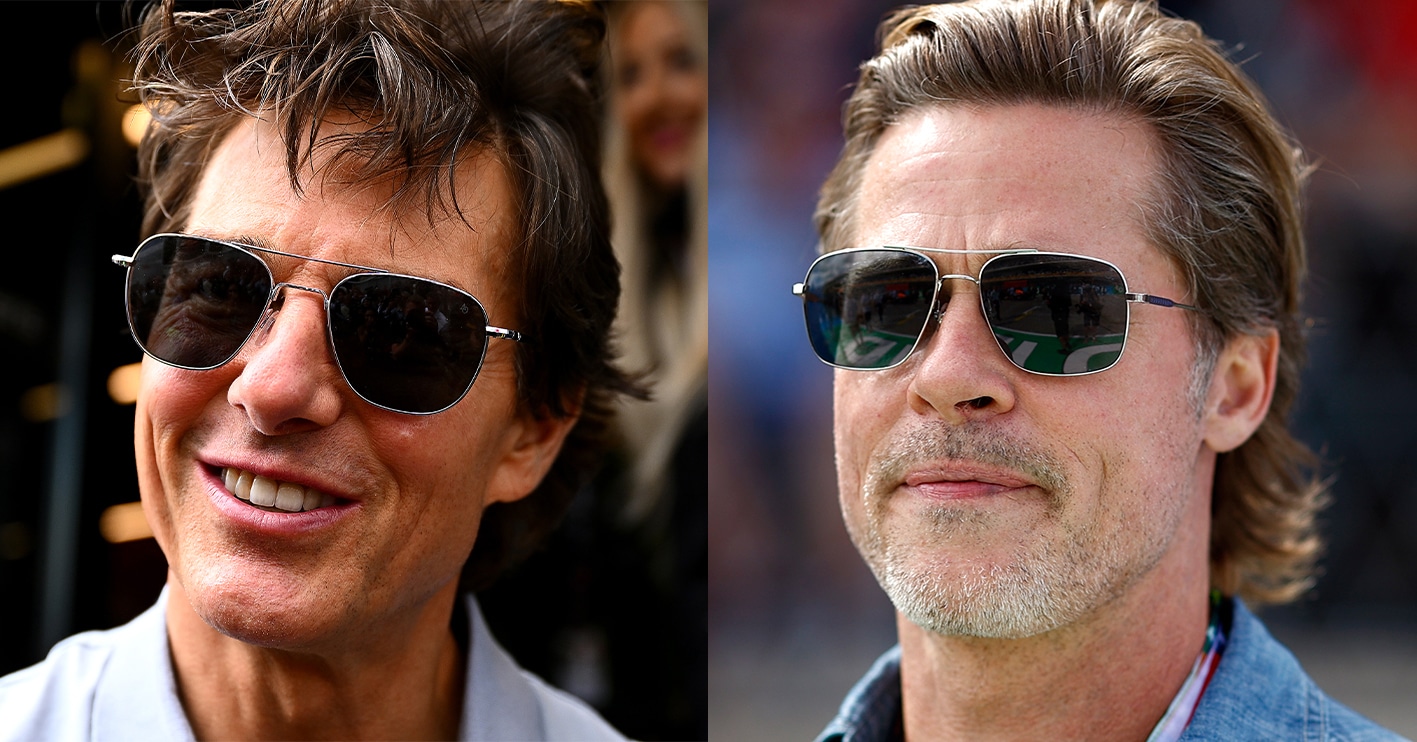Back in the 80s, Tom Cruise was Hollywood’s hottest male actor. By the time he made 1994’s Interview with the Vampire, however, Cruise’s co-star Brad Pitt had inherited the mantle of hot young thing. Director Neil Jordan’s adaptation of Anne Rice’s best-selling Gothic horror novel marked the first time Cruise and Pitt teamed up on screen. They would never work together again.
For years, persistent rumours have suggested that Tom Cruise and Brad Pitt butted heads. Cruise, paid millions more than Pitt for Interview with the Vampire, also insisted on being made to look more “physically dominant” than Pitt in the film. Pitt, meanwhile, would admit Cruise “bugged” him during the shoot, and later described their clashing personalities as like ‘North and South’.
Star treatment
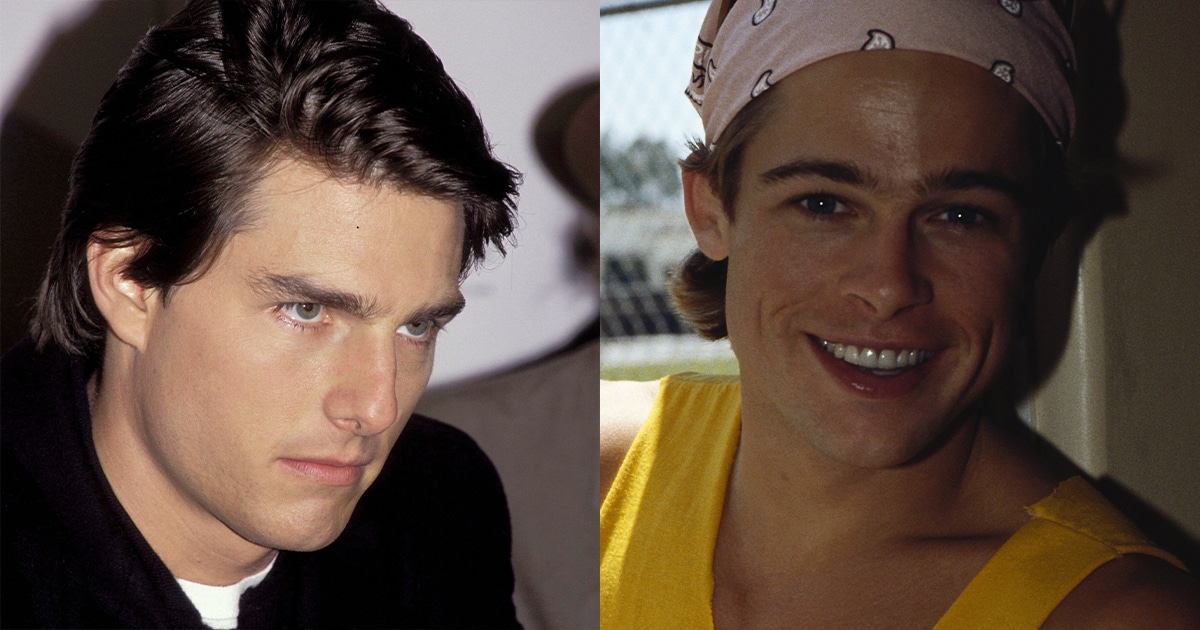
Tom Cruise dominated the 1980s. After breaking through as a leading man with 1983’s Risky Business, 1986 blockbuster Top Gun sent the New York-born actor stratospheric, promptly making the then-24-year-old the biggest star of his generation. In the years that followed, he balanced critically acclaimed and awards-laden dramas like Rain Man and Born on the Fourth of July with more mainstream-friendly hits like Cocktail and Days of Thunder.
Whilst Cruise was enjoying his early success, Brad Pitt was still trying to find his big break. The Oklahoma-born actor notched up plenty of TV and film bit parts in the late 80s, but nothing really brought him into the spotlight – until, at the insistence of Geena Davis, he was cast as bad boy hunk JD in 1991’s Thelma & Louise. When this proved a smash hit, audiences and critics couldn’t stop talking about the handsome and charismatic newcomer.
After a couple of commercial disappointments (Johnny Suede, Kalifornia) but strong notices for A River Runs Through It and True Romance, the buzz around Pitt was enough for him to land a plum blockbuster role. After Val Kilmer reportedly turned the part down, Pitt was cast as Louis in the long in-development film adaptation of Anne Rice’s 1976 novel Interview with the Vampire. Still, while Louis was the film’s lead, the juicier part was that of undead antagonist Lestat, which (after first being offered to Daniel Day-Lewis) went to Tom Cruise.

Interview with the Vampire attracted controversy from the get-go, not least thanks to Cruise’s casting. Author Anne Rice (who had written the part with Rutger Hauer in mind) publicly denounced Cruise, remarking that he was “no more my vampire Lestat than Edward G Robinson is Rhett Butler.” Nonetheless, producer David Geffen and studio Warner Bros gave Cruise a deal which made it clear he was the star of the show.
While Pitt’s Louis is arguably the lead of Interview with the Vampire (he is the vampire being interviewed, after all), Cruise’s name would be first in the opening credits. It would be Cruise’s name that appeared above the title on the Vampire poster, on which Pitt’s face does not even appear.
Cruise is also said to have earned $10 million for his performance, a substantial portion of the film’s overall budget, while Pitt was reportedly paid $3 million. What’s more, Pitt according to Neil Jordan found Cruise’s casting as Lestat “perplexing”, having expected Daniel Day-Lewis to take the part. Under those circumstances, Pitt allegedly began developing a grudge.
“I started really resenting him”

Pitt has been open about how making Interview with the Vampire on a London soundstage was a largely unhappy experience. The actor told Entertainment Weekly in 2011 that he was “miserable. Six months in the f***ing dark. Contact lenses, makeup, I’m playing the b***h role…”
Things reached such a low that at one point Pitt spoke to producer David Geffen in the hopes of quitting: “I said, ‘David, I can’t do this anymore. I can’t do it. How much will it take to get me out?’ And he goes, very calmly, ‘40 million dollars.’”
In addition to the filming schedule, Pitt was dissatisfied with the script, which he felt took the emphasis away from his character. “In the book it is a guy going on this search of discovery. And in the meantime, he has this Lestat character that he’s entranced by and abhors… In the movie, they took the sensational aspects of Lestat and made that the pulse of the film, and those things are very enjoyable and very good, but for me, there was just nothing to do – you just sit and watch.”
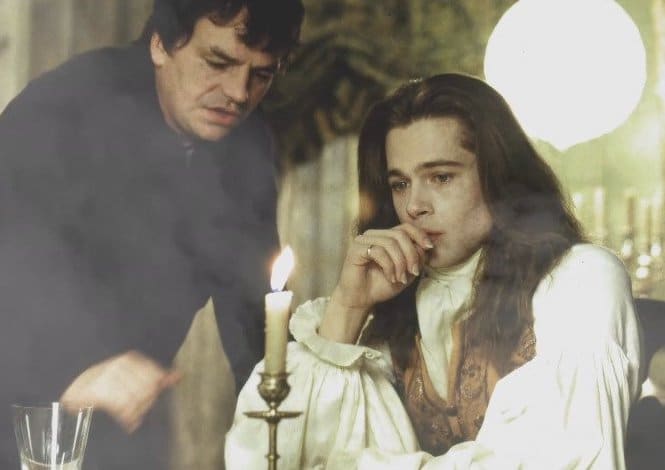
The increased emphasis on the Lestat character was likely at the insistence of the more-powerful Cruise – and this, in turn, saw Pitt allegedly develop an antipathy towards his co-star. “He bugged me”, Radar Online quoted Pitt as saying about his growing feud with Cruise on the Interview set. “There came a point during filming when I started really resenting him.”
While Pitt has said this was in part down to an “underlying competition that got in the way of any real conversation”, their contrasting personalities also rubbed Pitt the wrong way. Pitt told Premiere in 1995, “You gotta understand, Tom and I are… we walk in different directions. He’s North Pole. I’m South. He’s coming at you with a handshake, where I may bump into you, I may not, you know?”
Another issue when it came to Cruise maintaining his status as the film’s biggest star was the fact that Pitt was literally taller than him. Cruise’s boots were fitted with lifts to make their heights more level, which Pitt remarked was because Cruise “wanted his character to be more physically dominant. It does make sense – and then it doesn’t.” It’s been rumoured that Pitt would walk in a ditch next to Cruise for some scenes, to make Cruise appear taller.
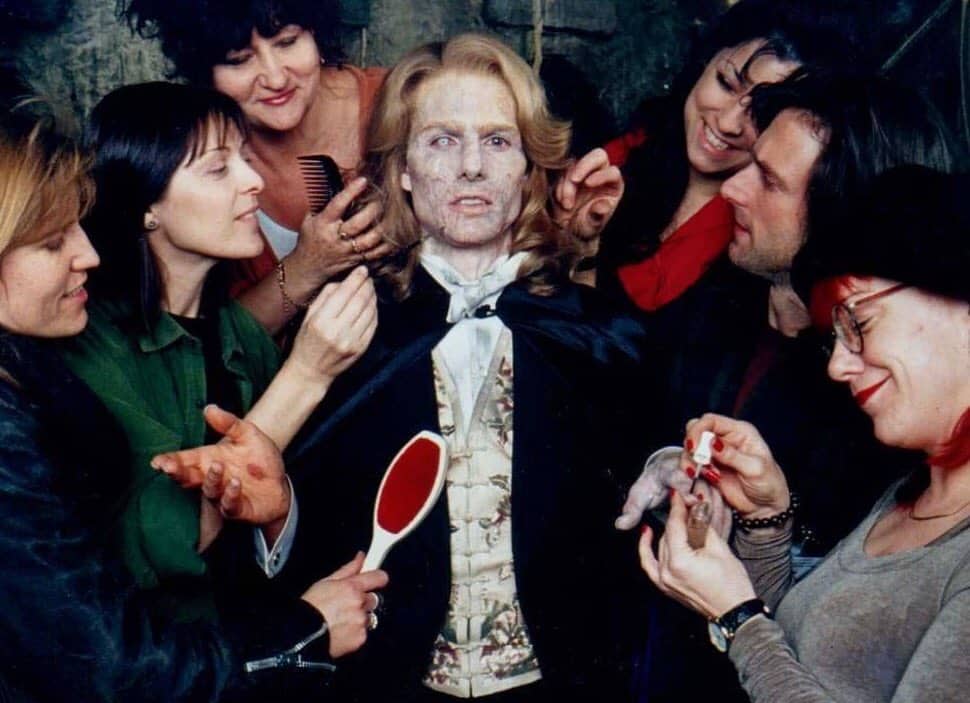
All the same, Pitt later defended Cruise from his critics: “[he] catches a lot of s**t because he’s on top, but he’s a good actor and he advances in the film. He did it. I mean, you have to respect that.” He also insisted that, despite the tension, their relationship “wasn’t nasty by any means, not at all.”
Cruise, who has always tended to be more guarded about his public statements, has remained tight-lipped on the matter of any feud with Pitt. At the time of the film’s release, Cruise remarked, “From my perspective, I thought that we worked very well together… I’m very proud of the scenes we had, so I think it worked out very well.” It has been claimed that Cruise complained of Pitt refusing to wear deodorant and having noticeable body odour on set.
After its sometimes difficult production (which included the loss of supporting actor River Phoenix, who died suddenly before shooting began and was replaced by Christian Slater), Interview with the Vampire proved a hit, earning almost $224 million at the box office and attracting positive reviews. Author Anne Rice even issued a public apology to Cruise, saying he was “wonderful” as Lestat. Even so, it didn’t take long for rumours to spread that the leading men hated one another.
The Brad Pitt “s**t list”
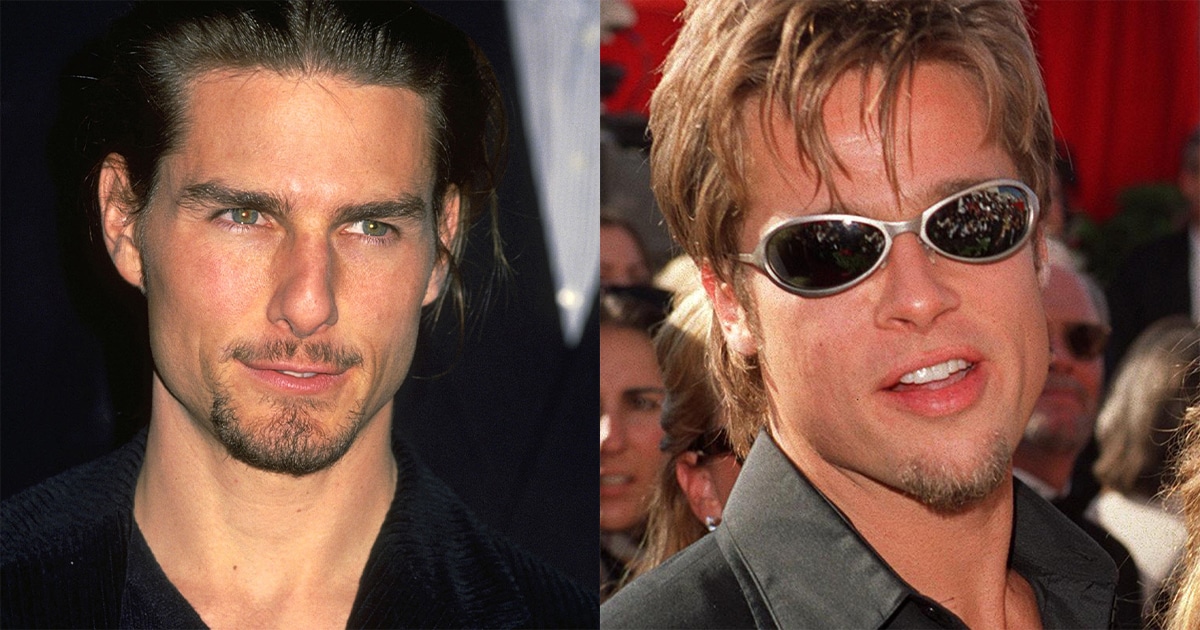
According to Pitt’s Bullet Train co-star Aaron Taylor-Johnson, Pitt keeps lists – “the ‘good’ list and the s*** list” – of people he wants to work with again, and those he doesn’t. Pitt has indeed demonstrated a tendency to keep working with the same people, enjoying numerous collaborations with directors David Fincher and Quentin Tarantino, as well as his Ocean’s co-stars George Clooney, Julia Roberts and Matt Damon.
Tom Cruise, however, is not among Pitt’s repeat collaborators. As leading men of the same age group (Cruise was born in July 1962, Pitt in December 1963), the two actors naturally come under consideration for the same roles from time to time. The Curious Case of Benjamin Button, Pitt’s 2008 collaboration with director David Fincher, had around a decade earlier been earmarked as a potential vehicle for Cruise, with Steven Spielberg then attached to direct.
Spielberg was of course a friend and collaborator of Cruise’s for a time, the actor and director working together on 2002’s Minority Report and 2005’s War of the Worlds. However, the director is said to have severed ties with Cruise when War of the Worlds was overshadowed by the actor’s infamously erratic behaviourat the time. In recent years, Cruise has settled on a very narrow list of collaborators.
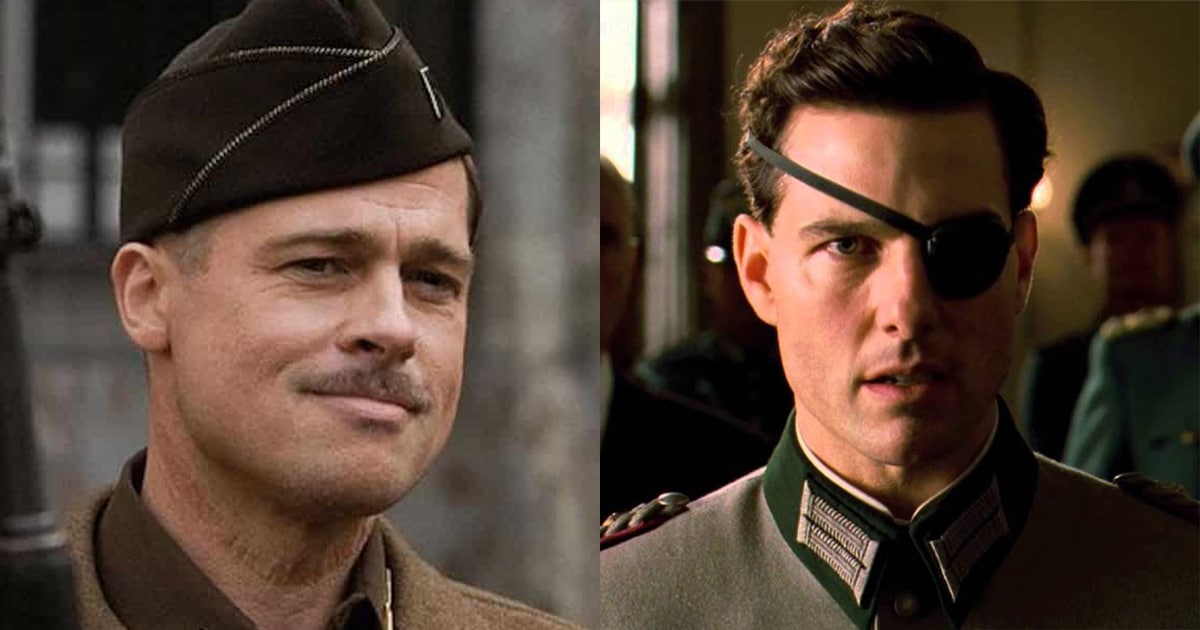
Cruise vs Pitt briefly became a hot topic again in 2009 with the release of Inglourious Basterds, Pitt’s World War II film with director Quentin Tarantino. The film arrived in the wake of another Second World War drama, 2008’s Tom Cruise vehicle Valkyrie – and word spread that Pitt had talked trash about Cruise’s film, calling it “ridiculous”. Soon thereafter Pitt’s representatives dismissed this as false, insisting he had never made such a remark.
This storm in a teacup was followed with further speculation of anti-Cruise sentiment in the Pitt camp with the release of 2010’s Salt. This spy thriller cast Angelina Jolie as CIA agent Evelyn Salt – but early on in the project’s development, Evelyn had been Edwin, and the role had been earmarked for Tom Cruise. Because Jolie was in a relationship with Pitt at the time, rumours got around that he had used his influence to get Jolie cast specifically to spite Cruise.
Salt director Phillip Noyce has insisted that Cruise left the film over concerns that the character was too similar to Mission: Impossible’s Ethan Hunt, and that it was producer Amy Pascal’s suggestion to hire Jolie instead.
Enemies reunited (almost)
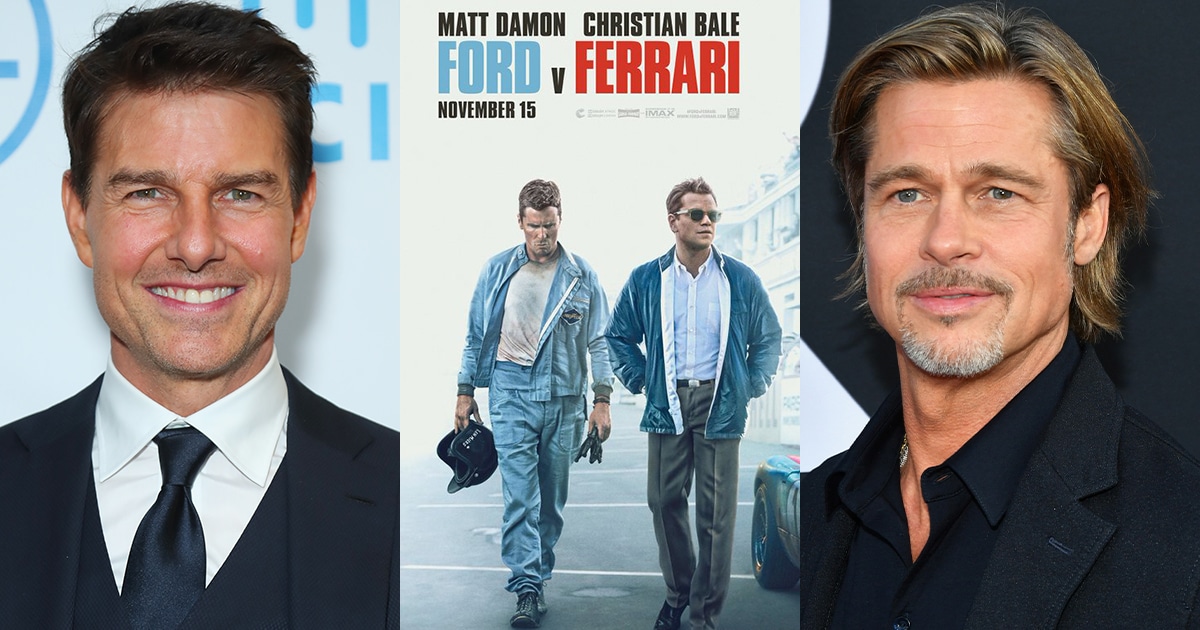
The notion of a Cruise and Pitt rivalry has never left the popular imagination – so it’s hardly surprising that Hollywood might look to capitalise on it. For a time, it was hoped that the two actors would reunite on screen in a car racing film initially entitled Go Like Hell, which was poised to be directed by Joseph Kosinski (one of Cruise’s most trusted collaborators, as director of 2013’s Oblivion and later 2022’s Top Gun: Maverick).
Kosinski says development on Go Like Hell “got to the point where I had Tom Cruise and Brad Pitt at a table reading the script together, which was pretty amazing. But we couldn’t get the budget to the number it had to be at.” In the end, the project was reworked into 2019’s James Mangold-directed Ford v Ferrari, with Matt Damon and Christian Bale.
There was one other major project for which both Cruise and Pitt were under consideration: Quentin Tarantino’s 2019 film Once Upon a Time… in Hollywood. Tarantino has admitted that he considered casting Cruise as stuntman Cliff Booth, saying: “He’s a great guy, and we really hit it off.” In the end, though, Tarantino decided to instead give the part to Brad Pitt – and Pitt’s performance ended up earning him the Best Supporting Actor Oscar. (Cruise, meanwhile, has failed to win any Oscars to date, despite three nominations.)
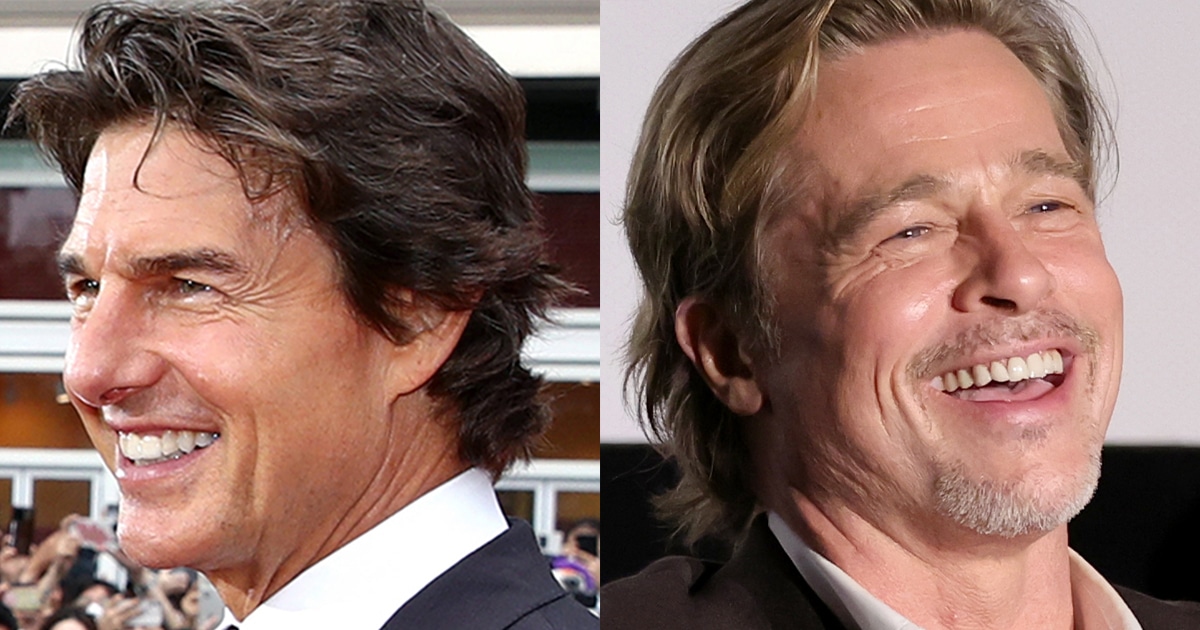
When promoting Once Upon a Time… in Hollywood in 2019, Pitt appeared on The Ellen Show, and whilst discussing a moment in the film when he is licked by a dog, Pitt light-heartedly explained the difference between Cruise and himself: “Tom Cruise, my friend, will tie himself to the side of an airplane and it will take off and land. I put apple sauce on my neck so a pit bull will show me love and affection. I don’t know who’s braver!”
Almost three decades on from Interview with the Vampire, Cruise and Pitt remain as prominent as they have ever been. Come what may, both their names are synonymous with the highest reaches of Hollywood superstardom. On some level, perhaps they’ll always be competitors – but here’s hoping we’ll get to see the two megastars reunite on the big screen some day soon.

